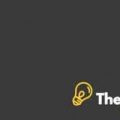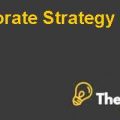Brentwood Associates: Exiting Zoes Kitchen Case Study Help
Scenario 1- IPO in Early 2014:
Under the proposed exit scenario, the investing firm decided to estimate the payout by valuing the business’s IPO using the 2013 adjusted EBITDA. In order to calculate the price at which shares will be offered, the current Average excluding Chuy’s and Noodles Inc. EV/Trailing EBITDA is used as these companies are already listed and are not at the same position as that of Zoes Kitchen. Moreover, the 2013 adjusted EBITDA of $11 million is used to value the IPO. Based on this data, it is estimated that the shares will be offered at a price of $26.93, assuming that the business hasan outstanding number of shares of 5.8 million. As the investor has 100% equity stake in the business; the market value of equity worth $156.2 will be the return or payout which the investor would get after the business gets listed. However, since the business needs to incur IPO offering cost of $10 to $13 million and one-off IPO cost of $1 to $2 million, therefore, the net return or payout will be $142.2 million. (Please refer to Exhibit 1)
Scenario 2- Sale to Strategic Acquirer:
Under this proposal, the equity has firm decided to exit the investment in Zoes kitchen by selling the business to a financial sponsor or Strategic Buyer. In order to estimate the value at which the business will be sold to the strategic acquirer, the average EV/EBITDA multiple of 13 has been used ,and the 2013 adjusted EBITDA of Zoes kitchen amounting $11 million is used for the valuation purpose. Based on the data used, it is estimated that the equity value of the company will be $24.66 per share, assuming that the firm has 5.8 million outstanding shares. However, the investor will need to incur legal costs of $1 million and a fee of $21.45 millionto the investment bank, which is 15% of the gross purchase price that will be incurred. Therefore, in this proposal, the investor will get a minimum payout of $120.55 million. (Please refer to Exhibit 2)
Scenario 3- IPO in early 2016:
Following the economic recession and other economic problems in the U.S, the business suffered significant losses,forcing the investor to withdraw his investment in the business. However, considering the growth prospects in the restaurant industry and strong past performance and sales of the business, the investing firm is planning to get an IPO in 2016and wait for the recovery offinancial markets in the region. In order to estimate the price at which shares will be offered in 2016, the current (2013) average EV/EBITDA of companies, excluding Noodles Inc. and Chuy’s have been used. Moreover, the joey’s adjusted EBITDA of 2015 is used, which is calculated by incorporating the 42% compound annual growth rate of EBITDA provided in the case study. It is projected that the company’s EBITDA will increase by$156.2 million in 2015. Based on the data used, the share price is estimated at $38.24, which is significantly higher than the share price calculated for the other two options. Moreover, it is assumed that the investor will need to incur costs associated with IPO amounting to $17 million as the actual costs, which will be incurred in case getting the IPO in 2016 is not specified in the case study. Therefore, based on the calculation, the minimum payout which investors will get as a result of getting IPO in 2016 is estimated to be $204.84 million, which is higher as compared to the other exit options.
Recommendation:
It will be recommended for the business to continue to hold the business for an additional two years and re-evaluate its existing options in 2016. The recommendation provided is based on the grounds that the option will provide a maximum payout to the equity investing firm as compared to the payout offered by the other exiting two options. Moreover, if the business decides to exit the investment by getting IPO in early 2015, the investor will get an internal rate of return of 916%, whereas the investor will achieve an internal rate of return of 1105% in case of getting IPO in 2016 and can decide to hold the investment in the business. (Please refer to Exhibit 4)
Moreover, exiting the company in 2014 might not result in a successful IPO, after considering the financial and economic downturn,weak financial position and performance of the business. Also, the investor will get an additional payout/benefit of $63 million in case of holding the investment in the business for two years. On the other hand, IPO will benefit the investor in terms of future profitability and liquidity as thestake in the shareholding will still be retained in the business. The business appears to be profitable as the business’s EBITDA has a compound annual growth rate of 42%, indicating the business will be recovered from loss-making position soon and significant return will be provided to the investors. Selling the business to a strategic acquirer will result in the loss of Brentwood associates' control in the business and will prevent the firm from enjoying future profits as the industry has higher growth prospects..........................
This is just a sample partical work. Please place the order on the website to get your own originally done case solution.











